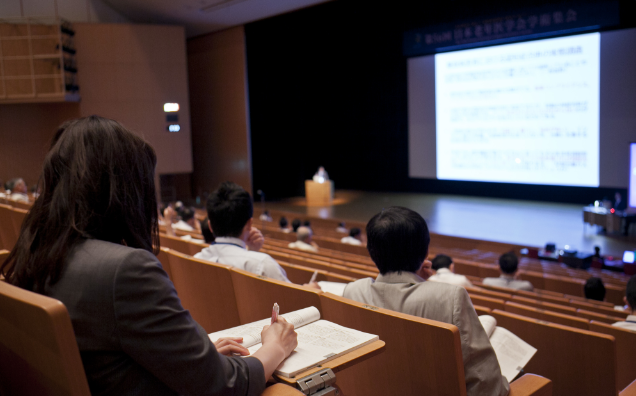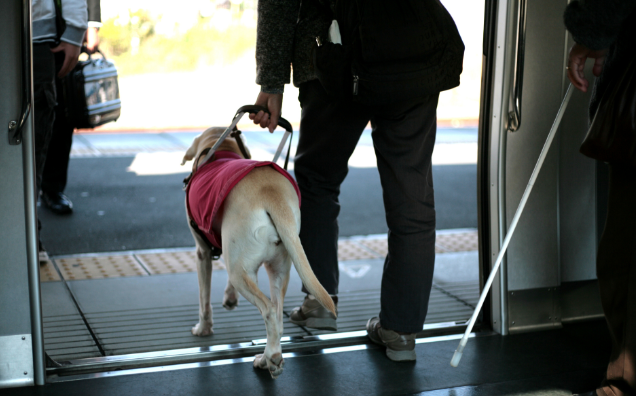- TOP >
- Efforts of Koraku Garden Hotel
Efforts of Koraku Garden Hotel 1-5-3 Koraku, Bunkyo-ku, Tokyo
Increased occupancy rate through guest-room universalization
We strive to ensure that at least one out of every 50 rooms is barrier-free while incorporating the design sense of architects
Koraku Garden Hotel once had a low occupancy rate in spite of its proximity to the Tokyo Dome and Koishikawa-Korakuen. By renovating one floor every year and increasing the number of universal-design rooms, the hotel has increased its occupancy rate. The hotel currently has six universal-design rooms, and there are plans to build another one in 2019. We talked to Yasushi Hiraoka, the general manager of the Japan-China Friendship Center Materials Department and Management Department, about the hotel's efforts.
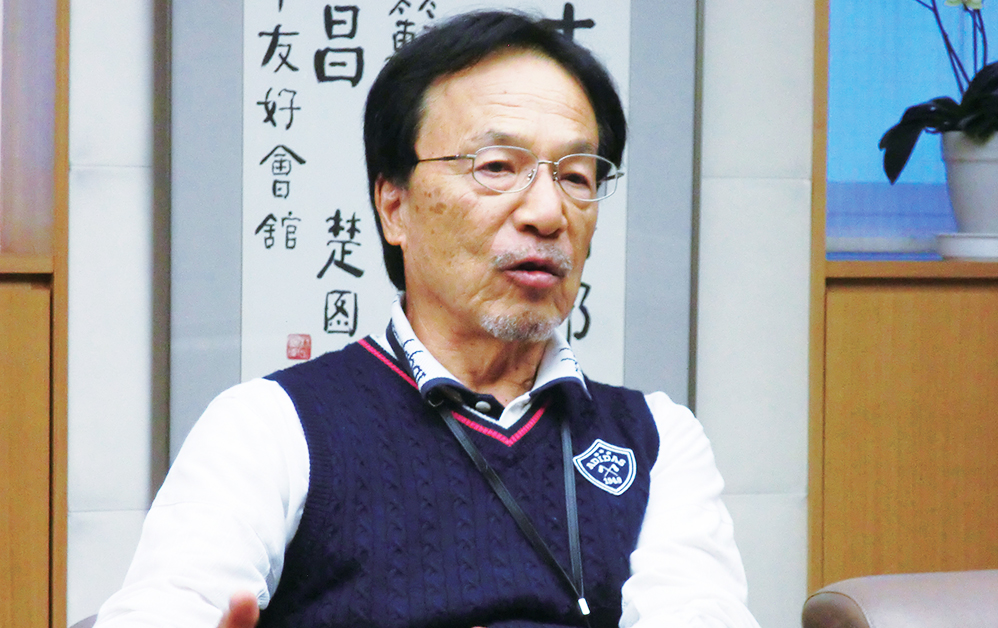
Making floor improvements over the span of six years to improve the occupancy rate
We opened our facilities in 1988. The facilities consist of the building occupied by the Japan-China Friendship Center tenants as well as the Koraku Garden Hotel accommodation building. Nine years ago, the facility occupancy rates were about 60% in terms of these tenants and about 50% in terms of people staying at the hotel. When the hotel was first opened, the design resulted in little heat being supplied, so we faced a problem in that, although we wanted to increase the occupancy rate, there were limits on how much electricity we could consume. Therefore, we decided to start by improving our heating and then spend six years improving each floor.
First, we improved our parking lot. We initially had a lift-type parking lot, but there were many cases where disabled people came to our hotel in wagon-type vehicles -which are tall enough to be ridden in a wheelchair- and such guests could not park in our parking lot due to the vehicle height. This basically meant that we were depriving disabled people, who often move by car, of the opportunity to go out. In addition, we removed the steps near the main entrance so wheelchair users could enter the hotel that way.
We are also working on setting up wheelchair-compatible restrooms, wheelchair-compatible elevators, and universalized guest rooms. We are using a subsidy for such efforts.
Given that we are striving to make our hotel accessible not only to disabled people but also to visitors from foreign countries, we have used the Accommodation Subsidy to Support Environmental Development for Foreign Travelers (currently the Subsidy for Inbound Business Growth) to translate our hotel's signboards into multiple languages.
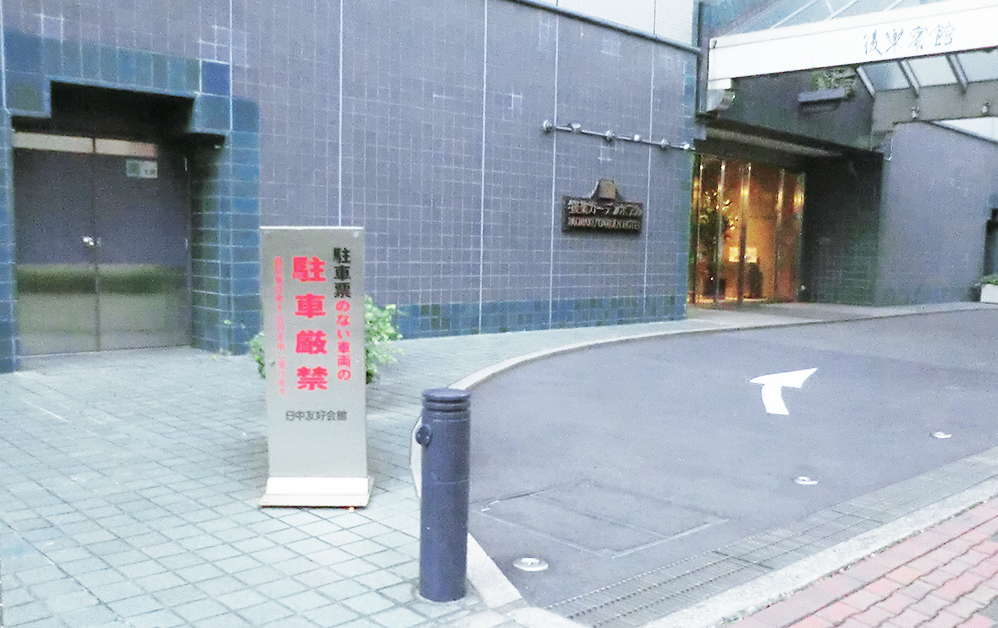 Getting rid of steps near the entrance
Getting rid of steps near the entrance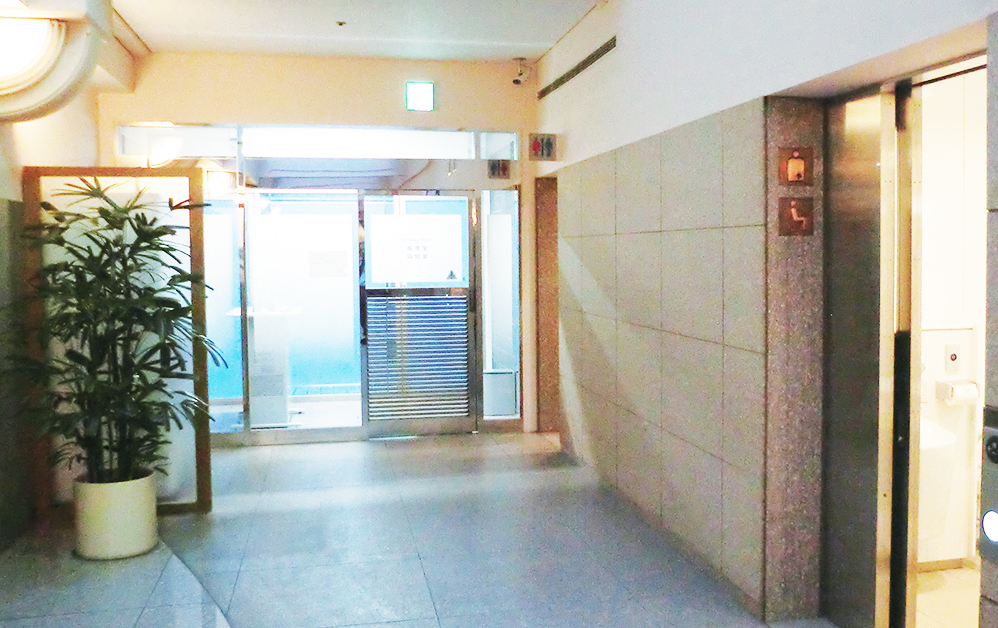 Wheelchair-compatible restroom
Wheelchair-compatible restroom
Making improvements by utilizing building-design know-how
We started our floor improvements with the 4th floor in 2012. Because of how rooms were built in the mid-1980s and early 1990s, drain pipes were run underneath modular bathrooms, so there was always a 20-centimeter step between guest rooms and modular bathrooms. However, by combining each pair of single rooms into one room, we made it possible to use a slope to get from the entrance to the bedroom and achieved a flat design in terms of the relative heights of bedrooms and bathrooms.
We also replaced the bathroom doors with triple sliding doors to make it possible to enter from either the restroom side or the side closer to the bathtub and selected doors that are easy to open. In addition, the mirrors are big enough to be visible from anywhere.
As a building designer, I am involved in designing special nursing homes, and the design we used for our hotel was actually used for a hospital in Shizuoka, so it has a record of being easy to use.
All the room-light and temperature-control switches are at a low height to make them easy to push even while in a wheelchair. In addition, our rooms have flash lamps that flicker whenever there is a sound from the intercom.
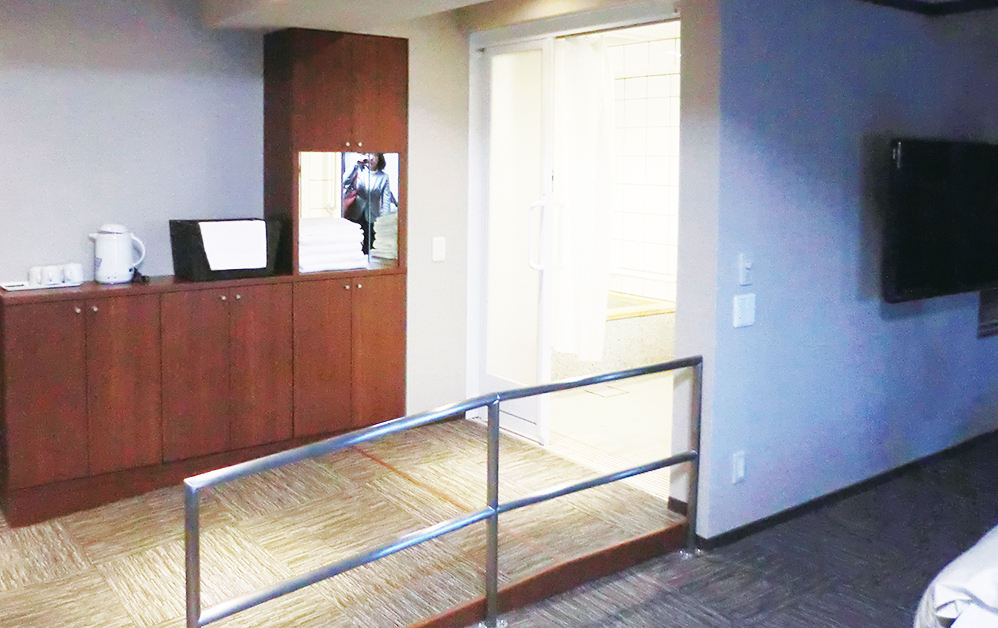 Slope from a guest room to a bathroom
Slope from a guest room to a bathroom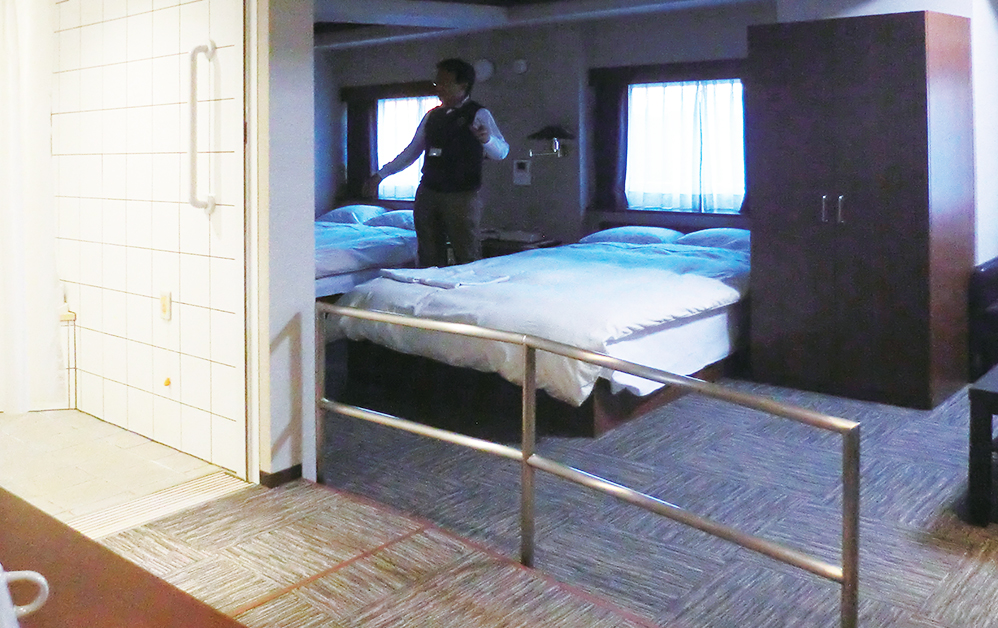 Slope from a guest room to a bathroom
Slope from a guest room to a bathroom
Coming up with ideas in terms of both expenses and playfulness
The 5th floor, which we renovated in 2013, has the same design as the 4th floor, but the universal rooms on the 9th and 10th floors, which were renovated later, were redesigned by combining three single rooms into two bedrooms.
The purpose of combining three rooms into one was to create semi-suites. For this room type, the bathroom is separate from the restroom/washroom. We got rid of the bathroom steps by using slopes to each bathroom. In addition, the restrooms/washrooms are at the same height as the bed location.
To add a sense of playfulness to the bathtubs, we used Towada stone around the edge of the cypress wood. In cases where the bathtubs are high, we also provide transfer benches and other rental equipment, and we purchased this assistance equipment by using the Subsidy to Promote Barrier-Free Accommodations.
The height of the beds makes transferring from a wheelchair easy, and mattresses are above the frames. As a result, it is easy to think about how tall the mattresses should be in centimeters, and it is also easy for the housekeepers to replace the sheets.
On the 6th floor, which we renovated in 2018, a slope has been built to connect the entrance to the room, and, instead of being cylindrical, the slope's handrail is somewhat flat, which helps to prevent people's hands from slipping. Although it would have been expensive to custom-order something like this, we managed to find a ready-made product. We are also being careful in terms of expenses by using ready-made products for other parts as well. In addition, as I mentioned earlier, we are using a subsidy to advance various other efforts as well.
These efforts have proven successful, and we currently have an occupancy rate of about 80% as well as an improved average daily rate. In line with the new standards of the Barrier-Free Law, our goal is to ensure that one out of every 50 rooms at our hotel is universal.
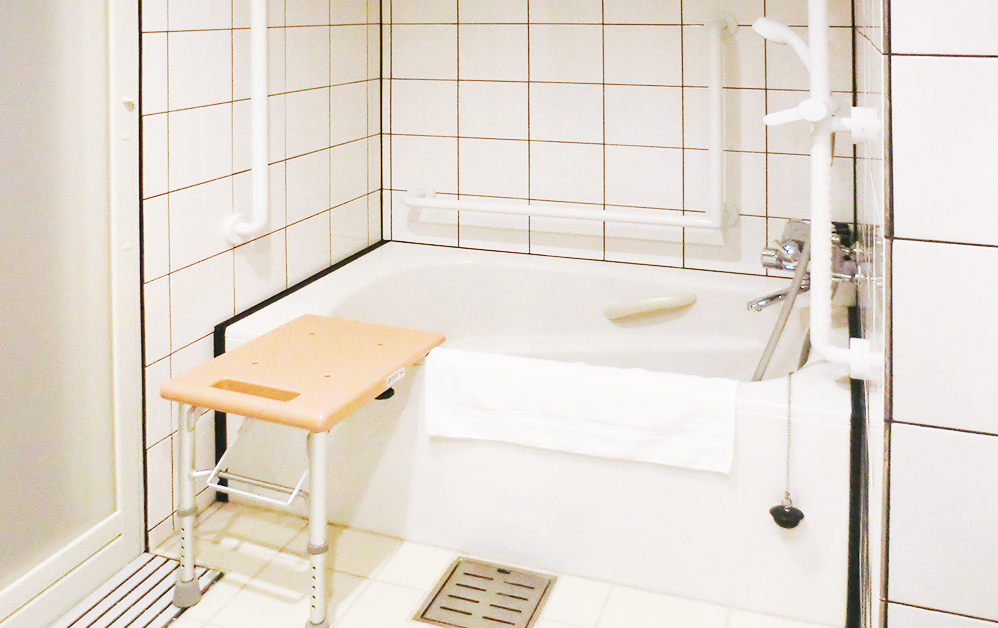 Transfer bench (rental equipment)
Transfer bench (rental equipment)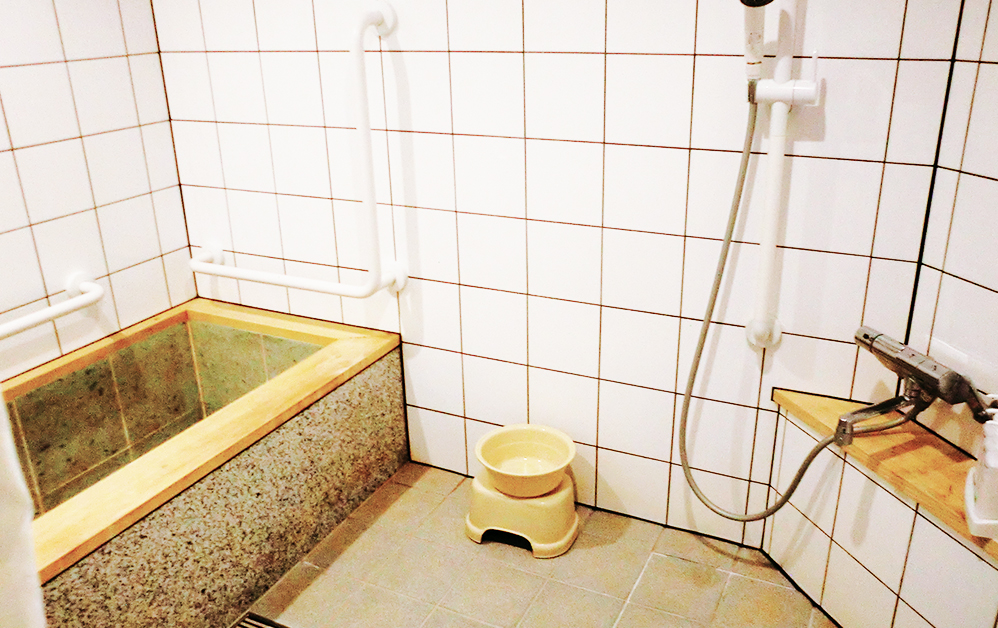 Handrail in a bathroom
Handrail in a bathroom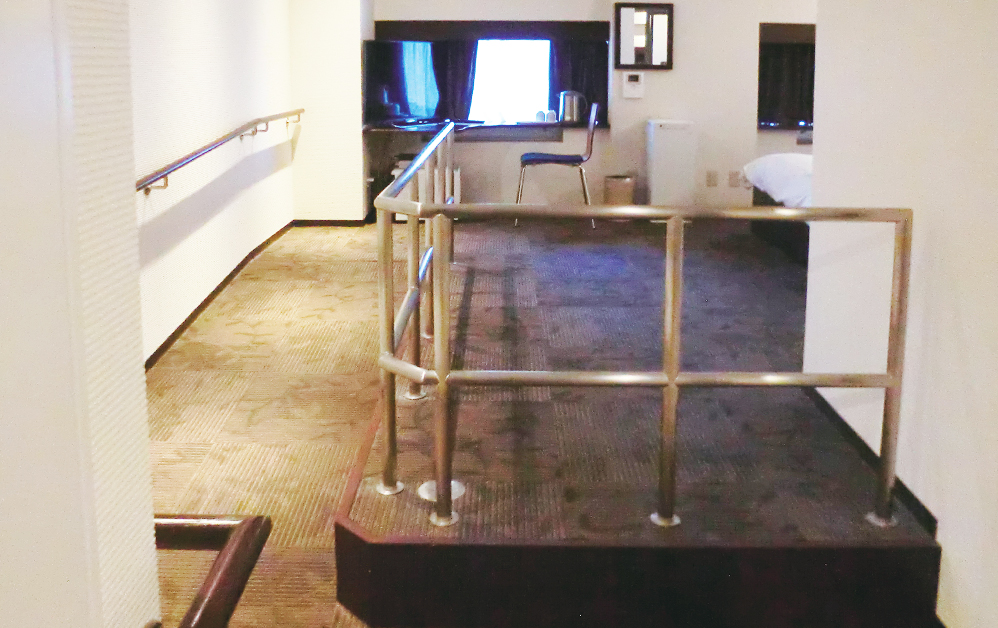 Slope from the entrance to a guest room
Slope from the entrance to a guest room
 social media accounts
social media accounts
Tokyo, a city that is accessible everywhere to anyone.
Sightseeing where you wish, as you wish.
This ability to travel anywhere you please makes life that much richer.
Tokyo welcomes your visit.
Here you can encounter tradition,
history, culture, nature, technology,
and, best of all, smiling faces.
Making tourism closer and more
enjoyable through accessible tourism.



